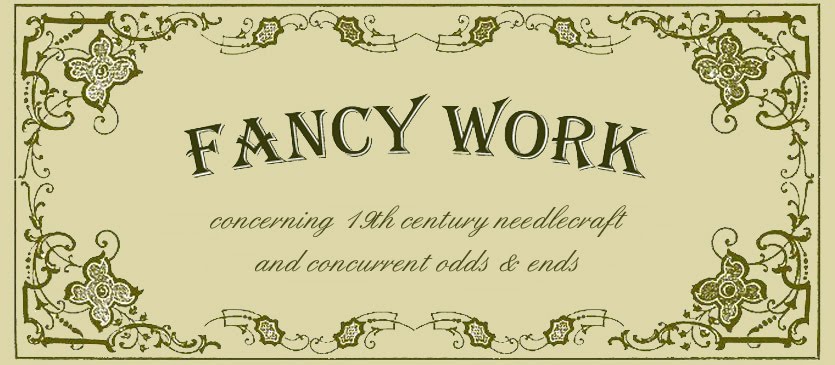The oppressive heatwave affecting most of the country these past few weeks has brought out the flies in droves. I can't imagine how much twine or how many hours it would require to make this garment, but I am sure that any pony would be grateful for the protection.—K.
Materials.—Fine twine; coarse purse twist, or knitting cotton No. 6; colored wool, two large netting needles; and a common penholder for a mesh.
Make a foundation of 31 stitches; net eight rows, increased one stitch at the end of each row. Having 39 stitches, leave 13 at each end for the cheeks, and work thus, the 13 in the middle; net to the end of the 13; turn back, net the same stitches, taking the two last as one; turn back, work the row, take the two last loops as one; turn back, net the row, take the two last loops as one; turn back, net the row, take the tow last loops as one. You have thus decreased twice on each side, reducing your original 13 stitches to 9. Work three rows without increase or decrease; in the two following rows you make a stitch at the end of each row; after the fourth row break off your cotton.
Begin at the commencement of the work; net 11 stitches, leaving 2 for the eye; turn back, net to the beginning of the row; net three more rows, decreasing 1 stitch at the end of the first and third; net five more rows without increase or decrease, and four more rows, increasing 1 stitch at the end of the first and third; net a fifth row, the end of which comes under the increase in the preceding rows; then take a bit of cotton, make a loop with it, fasten this loop on your knee, net 2 stitches in it, take up the middle piece and net it; then take another needle and work the second cheek exactly like the first; break off the cotton of the second needle, and, having made a loop and fastened in on your knee as before, net in it two stitches with the first needle, and continue the row along the second cheek.
Your three pieces being thus joined in one, work four plain rows. In the middle of the fifth make 1 stitch, net 1, turn back, net 1; increase one stitch in each of the two following loops; turn back, net 2, increase 1 in the third, net 2, increasing in the last; this is the beginning of a piece in the shape of a diamond, each row being increased in the middle and at the end. When you have 21 stitches, one on each side of the increase in the middle, net 2 loops, take a rug needle, thread it with colored wool or cotton; fasten the wool in the third loop of the row, work with it in 5 stitches, so as to produce 4 whole colored loops; with your netting-needle, work in each of these colored loops in stitches, and continue to net the row (increasing as before in the middle). Within 7 stitches from the end, take your rug needle and colored woo; work in 5 loops with it, to produce 4 whole colored loops; break off the wool, take up your netting-needle, work 3 stitches in each of the colored loops, and finish the row; then work four whole rows, increasing 1 stitch in the middle as before, but decreasing on each side the first and last of the 12 stitches made in the colored loops; continue thus till the decreases meet, after which cease to decrease, but continue to increase in the middle till you have thirty-nine rows in the diamond, counting from the first stitch; baste each side of the diamond to the corresponding part of the head, and, when you have brought the ends to meet exactly, work in the loop- of the side of the headpieces first, on the one side, up to the increases of the beginning; then turn back, work the row, and pick the stitches along the other side of the headpiece up to the increases; work this row backwards and forwards, increasing now not in the middle, but at the end, till you have altogether 84 stitches, the net twelve more rows without increase or decrease, and twelve more, taking the last two loops along; break off the cotton.
Net the ears as follows: Cut off the colored stitches, and work round the opening, decreasing in every other round 1 stitch on each side of the opening, keeping the back of the ear larger to the last; when about six stitches remain, gather them and fasten off.
This completes the fore part of the clothing; the second is a square piece, rather broader than the broadest part of the first
—say 100 stitches in width, and 80 rows in length.
To take up the pony-clothing, after getting it washed and starched, if it has been made of white cotton, net or knit a fringe all round; gather the stitches round the openings for the eyes, to bring them to a regular shape, and sew round them a piece of gimp of a moderate width, and a band of the same gimp on the forehead, from the outside of one ear to the outside of the other; then sew on each five strings, each terminated by a tassel; two to fasten round the mouth, two under the head, and the other on the front of the neck.
Originally published in Godey's Lady's Book & Magazine, February 1856.




